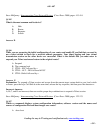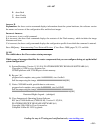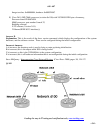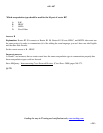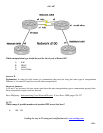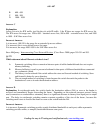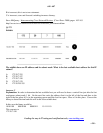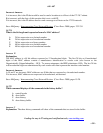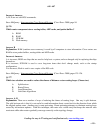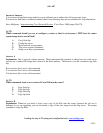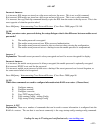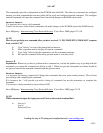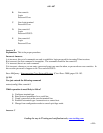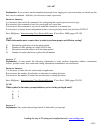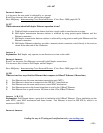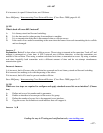
640 - 607
Leading the way in IT testing and certification tools, www.testking.com
- 110 -
Incorrect Answers:
A, B, D are not valid IOS commands.
Steve McQuerry. Interconnecting Cisco Network Devices. (Cisco Press: 2000) page 94.
Q. 176
Which router component stores routing tables, ARP cache, and packet buffers?
A. ROM
B. RAM
C. NVRAM
D. Flash memory
Answer: B
Explanation: RAM (random access memory) is used by all computers to store information. Cisco routers use
RAM to store packet buffers, routing tables and ARP cache.
Incorrect Answers:
A is incorrect; ROM are chips that are used to help boot a system, and are changed only be replacing the chips
themselves.
B is incorrect; NVRAM is used to save long-term items that don’t change much, such as the startup
configuration.
D is incorrect; Flash is used to save copies of the IOS code.
Steve McQuerry. Interconnecting Cisco Network Devices. (Cisco Press: 2000) pages 125-126.
Q. 177
Which two solutions are used to reduce the chance of distance vector routing loops. (Choose two)
A. Split horizon
B. Route Poison
C. Area Hierarchies
D. Link State Algorithms
Answer: A, B
Explanation: There are a number of ways of reducing the chance of routing loops. One way is split horizon.
The split horizon rule is that it is not useful to send information about a route back in the direction from which
the original update came. Another way is route poisoning. Route poisoning attempts to eliminate routing loops
caused by inconsistent updates. With this technique, the router sets a table entry that keeps the network state
consistent while other routers gradually converge correctly on the topology change.



